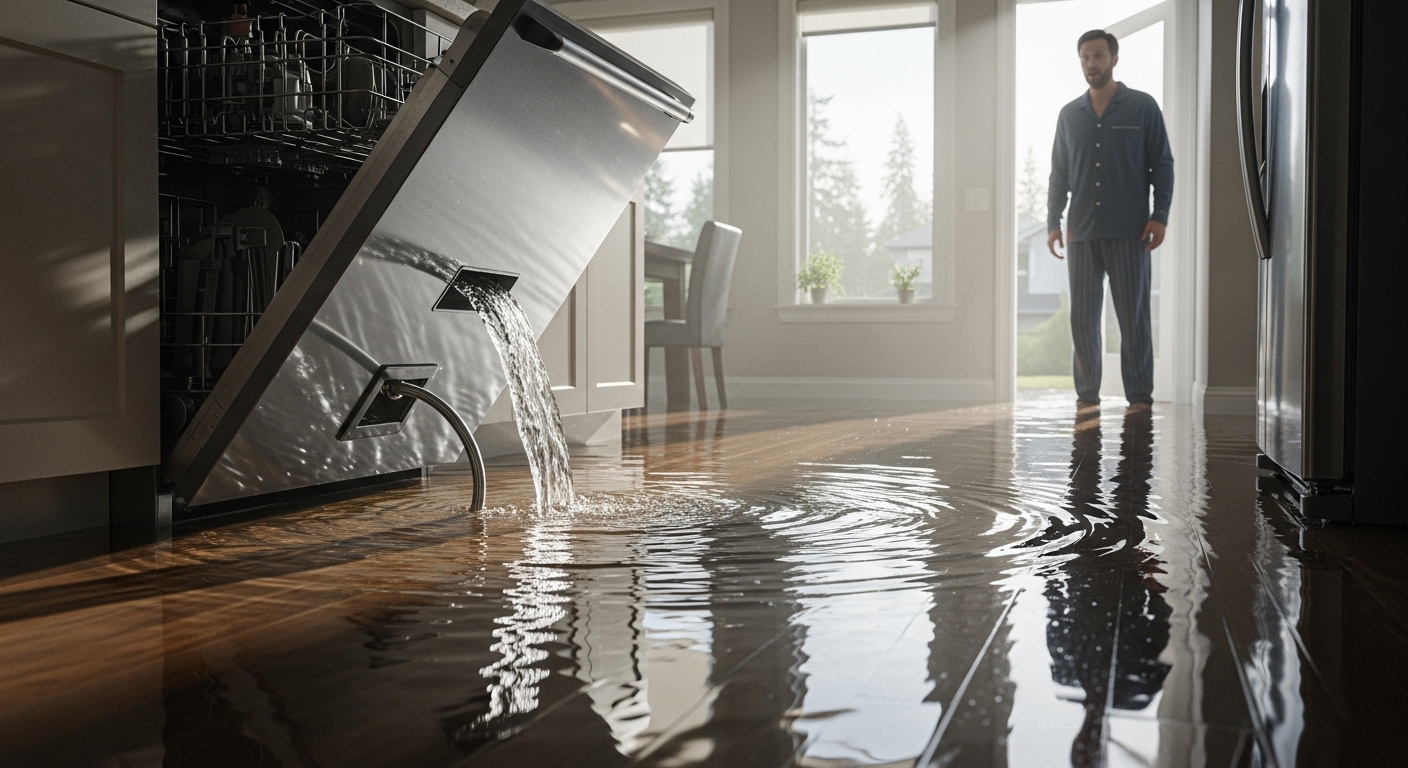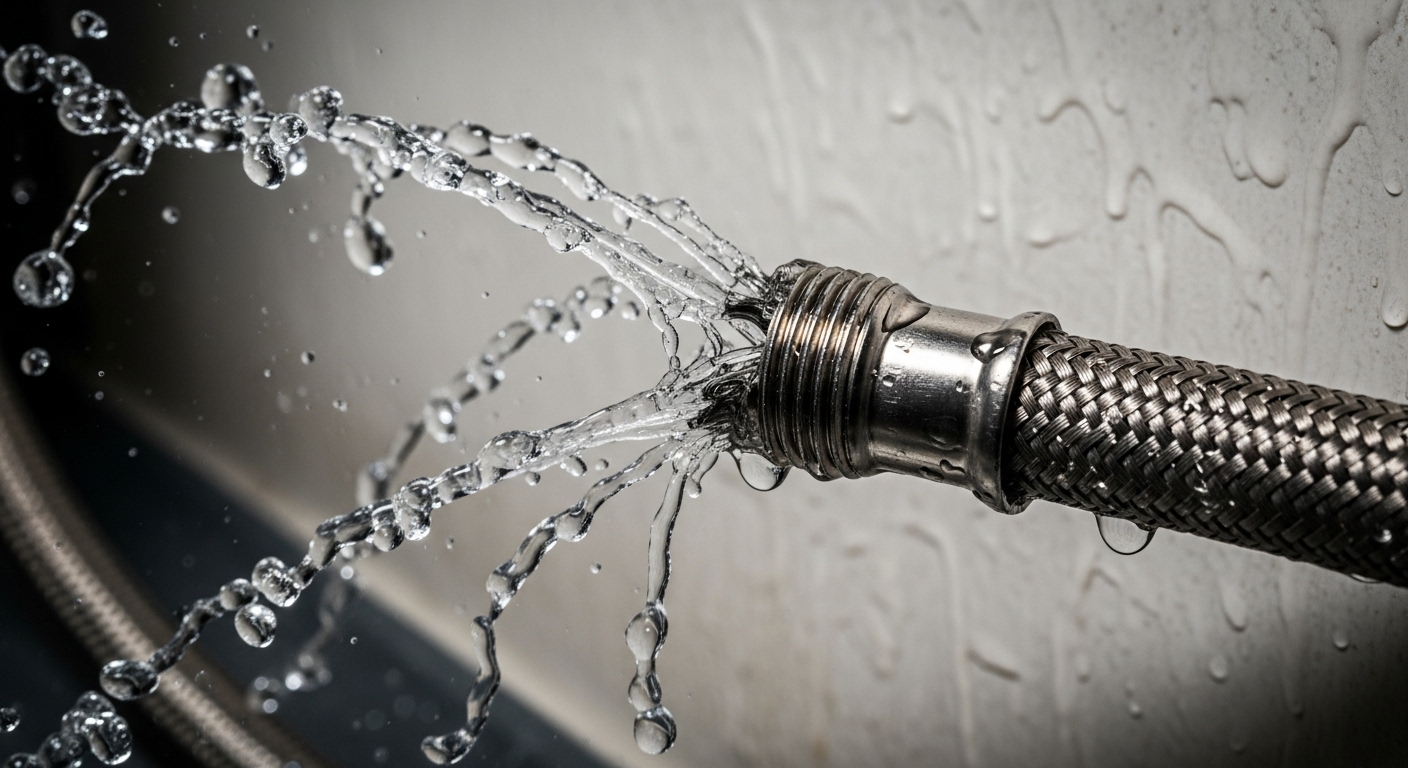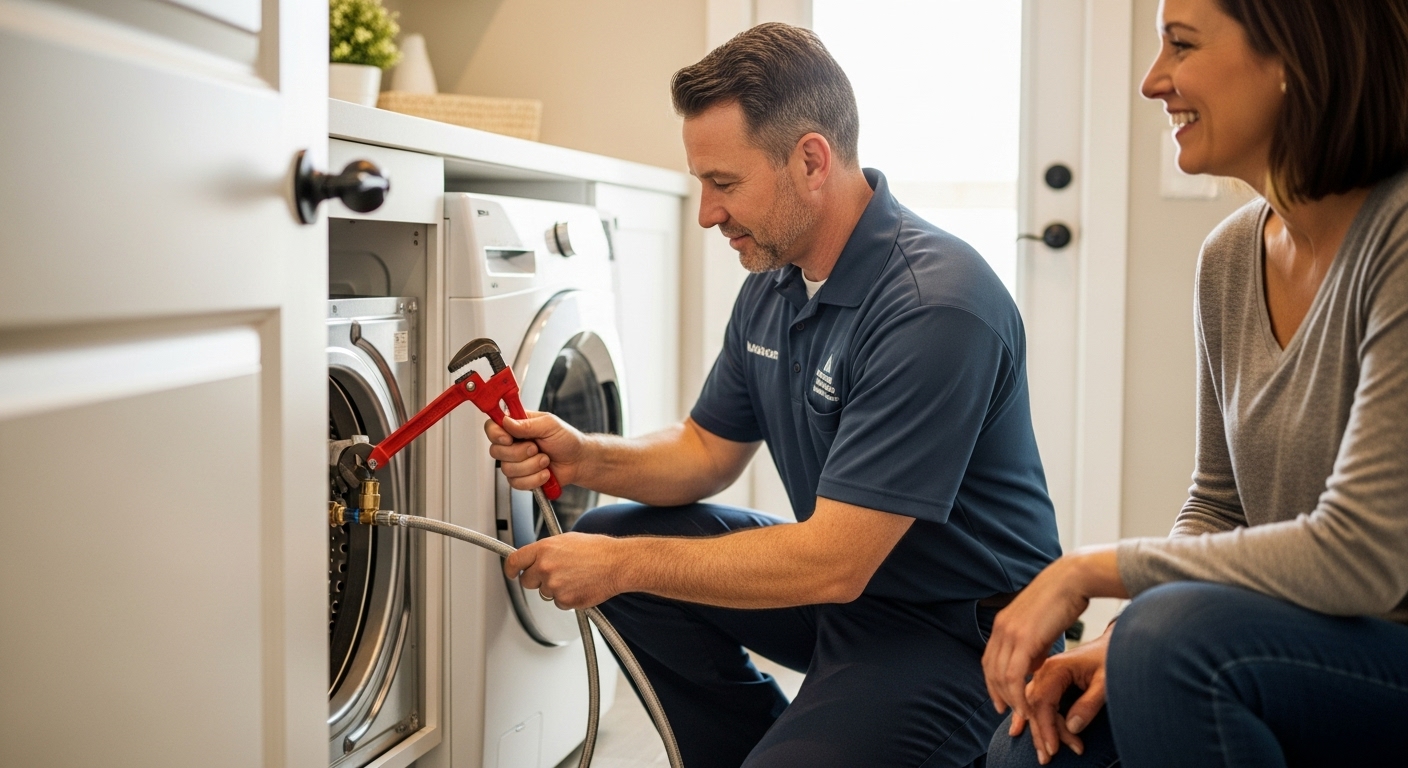The Complete Guide to Appliance Water Line Connections: When DIY Turns Into Expensive Flooding for Maple Ridge Homeowners
Dealing with appliance water line issues that could flood your home? No problem – we’ll cover the most common problems that can cause expensive disasters, and what you can do about them from the comfort of your Maple Ridge home.
Picture this: you wake up on a Saturday morning to the sound of rushing water, only to discover your DIY dishwasher installation has turned your kitchen into a swimming pool. Unfortunately, this scenario plays out more often than you’d think in homes across Maple Ridge. As someone who’s spent countless hours researching appliance repairs and talking to local homeowners, I can tell you that water damage from appliances affects approximately 14,000 individuals daily across North America, with average insurance payouts reaching a jaw-dropping $11,605 per incident.
The thing is, most of these disasters could have been prevented with proper knowledge and professional installation. While the YouTube tutorials make it look easy, appliance water line connections involve complex interactions between water pressure, electrical systems, and local building codes. In Maple Ridge specifically, our unique clay soil conditions and seasonal temperature fluctuations create additional challenges that most DIY guides don’t even mention.
What’s really eye-opening is how the costs add up. Sure, that professional installation might seem expensive at $679-$831 per piping run, but compare that to the average water damage restoration bill of $7,000 to $11,605, and suddenly professional help looks like a bargain. Plus, with trenchless water line replacement options available locally for $70-$250 per linear foot, Maple Ridge homeowners have access to cutting-edge solutions that minimize yard disruption.
Key Outtakes:
- Water damage from appliance malfunctions averages $7,000 per claim, with washing machine leaks costing up to $5,000 and water heater failures averaging $6,000 in damages
- Professional appliance water line repair in Maple Ridge costs significantly less than flood damage remediation, with installations ranging from $679-$831 compared to thousands in restoration costs
- Common problems include clogged water filters needing replacement every 6 months, faulty inlet valves, and improperly positioned drain hoses that violate basic safety protocols
- DIY installations often fail due to inadequate tools, code violations, and misdiagnosis of underlying problems, leading to emergency repairs that cost 3-5 times more than initial professional installation
- Preventive maintenance including annual inspections, hose replacements every 5 years, and proper appliance leveling can prevent 69% of water heater failures and 78% of washing machine disasters

Understanding the Hidden Dangers of Appliance Water Line Failures

Let’s be real about what we’re dealing with here. When I first started researching appliance water line problems for Maple Ridge homeowners, I was shocked to discover that 98% of basements experience some level of water damage during their lifetime. What’s even more concerning is how quickly a small leak can escalate into a full-blown disaster that requires professional water extraction and mold remediation.
The most common culprits are refrigerators, dishwashers, and washing machines – basically the appliances we rely on most. Refrigerator water dispensers require specific water pressure of at least 20 PSI to function properly, and when that pressure drops or spikes, connections can fail catastrophically. I’ve seen cases where homeowners ignored that slight drip behind their fridge, only to come home to inches of standing water that had seeped through their hardwood floors and into the basement below.
Dishwashers present their own unique challenges because they require both water supply and drainage connections to work in perfect harmony. The drain hose must be positioned at least 20 inches above the floor to prevent siphoning, but many DIY installations get this wrong. When water back-flows through an improperly installed drain line, it can flood your kitchen faster than you can say “insurance claim.” Even worse, dishwasher leaks often go unnoticed for weeks because they’re hidden behind cabinet panels, allowing water damage to spread extensively before discovery.
Washing machines are perhaps the most dangerous because they handle large volumes of water under pressure. The supply hoses (hot on the left, cold on the right) experience constant pressure cycling that can cause fatigue failures. Statistics show that 78% of washing machines less than 11 years old will experience hose failure, making regular inspection absolutely crucial. When a washing machine hose bursts, it can dump 650 gallons per hour onto your laundry room floor – enough to cause structural damage and create perfect conditions for mold growth.
Why DIY Water Line Repairs Often Become Expensive Disasters

Now, I’m not saying all DIY projects are doomed to fail, but appliance water line connections are definitely not beginner territory. After reviewing dozens of emergency repair calls in the Maple Ridge area, there’s a clear pattern of well-intentioned homeowners who tried to save money upfront, only to face massive bills later when their quick fixes failed spectacularly.
The biggest issue is that most DIY enthusiasts lack the specialized tools needed for proper installation. You can’t just grab a wrench from your toolbox and expect professional results. Proper water line connections require torque specifications, pressure testing equipment, and knowledge of local building codes that most homeowners simply don’t have. I’ve seen cases where improper connections led to water hammer damage throughout the entire plumbing system, requiring extensive repairs far beyond the original project scope.
Then there’s the code compliance nightmare. Maple Ridge follows strict British Columbia building codes that require specific materials, installation methods, and inspection procedures. DIY installations that violate these codes can create legal complications when selling your home, and worse yet, insurance companies may deny claims if non-compliant work contributed to water damage. One local homeowner learned this the hard way when their insurance company discovered DIY plumbing work and refused to pay a $23,000 flood damage claim.
The diagnostic aspect is where DIY really falls short. When your dishwasher stops filling with water, the problem could be a clogged water filter, faulty inlet valve, malfunctioning overfill protection float, or issues with water pressure throughout your home’s system. Without proper diagnostic equipment and experience, homeowners often treat symptoms rather than root causes, leading to recurring problems that compound over time.
What really gets expensive is when DIY attempts create emergency situations. I’ve documented cases where homeowners tried to fix a simple leak on Saturday afternoon, only to cause a pipe burst that required emergency plumbing services, water extraction crews, and temporary hotel stays while their home dried out. Emergency repairs after DIY failures often cost 3-5 times more than professional installation because they involve damage control, not just installation.
Professional Installation vs DIY: The Real Cost Analysis

When we break down the true costs, professional installation starts looking like a no-brainer investment rather than an expensive luxury. Licensed appliance repair technicians in Maple Ridge operate throughout the Tri-Cities area and carry comprehensive insurance coverage that protects homeowners during the work process. This protection alone can save thousands if something goes wrong during installation.
Professional installations include warranties that DIY work simply can’t match. When you hire a licensed contractor, you’re getting a guarantee on both parts and labor, plus someone to call if problems develop later. Compare that to DIY work where you’re essentially self-insuring against all possible failures, and the professional option becomes much more attractive from a risk management perspective.
The expertise factor is huge, especially in Maple Ridge where our unique clay soil conditions affect water line installations. Professional installers understand how seasonal ground movement impacts buried lines and can specify appropriate depths and protection methods. They also know local water pressure variations and can recommend pressure regulation solutions that prevent premature appliance failure.
Let’s talk numbers. Basic water line installation by professionals runs $679-$831 per piping run, while trenchless water line replacement costs $70-$250 per linear foot. That might seem expensive until you consider that the average appliance water damage claim is $7,000, and complex claims can exceed $11,605. Professional installation essentially acts as insurance against these catastrophic costs.
Time is another factor people often overlook. A professional installation that takes 2-3


Recent Comments